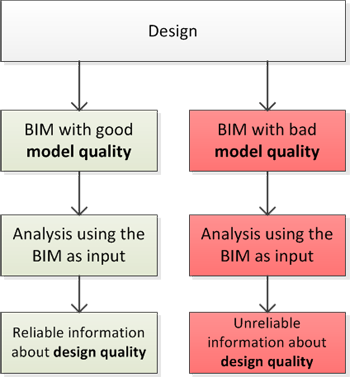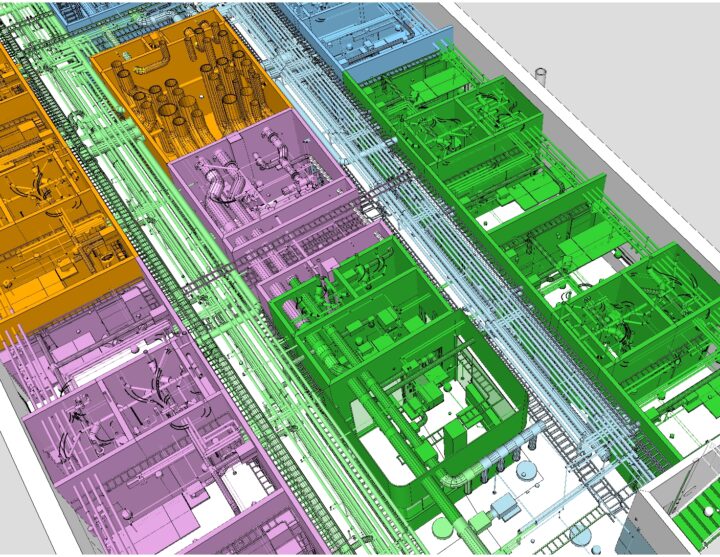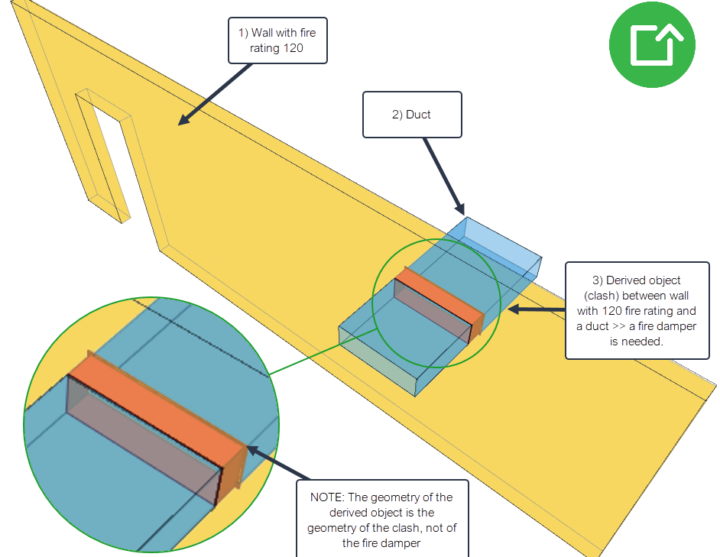What is BIM quality?
21.04.2014
By simply separating model quality and design quality we get a much clearer understanding of what BIM quality really is. If we can have a bad model of a good design and a good model of a bad design, then model and design quality cannot logically be the same thing. When you think about it, this separation is quite obvious, but let’s anyway go shortly through the rationale with some examples.

In clash detection each involved discipline, like architectural, structural and HVAC design, is responsible for delivering a BIM of their own design and these different BIMs are used as input for clash detection. The clash detection then tells us something about the design quality by revealing geometric conflicts within the combined model. But the results of clash detection, and thus any information we learn about the design using it, can only be reliable if the input into clash detection has good quality. Otherwise we get garbage in, garbage out.
The same applies to quantity take-off, energy analysis, spatial program validation or any other use of BIM. For example in spatial program validation the space names used in the BIM must match the space names defined in the spatial program. If they do, we do not yet know if the design satisfies the requirements of the spatial program (design quality), but we know that comparing the BIM with the requirement will give us reliable information about their relationship. This means that we must first take good care of the model quality, i.e. the quality of the information we use as input for the operations that give us information about the quality of the design.
Design quality is often a subjective thing and in different contexts we may assign a different quality to exactly the same information. For example the same cost estimate may be ok for one client and too high for another, or the same annual energy consumption may be ok or too high depending on the energy targets that have been set. A client may accept a design that does not satisfy the spatial program because the design may have other more important qualities, and the list goes on.
But model quality is objective. When we use a BIM as input into another process there does not have to be anything vague about the information requirements of that process. If we want to clash load bearing walls with HVAC ducts, then the input from the architect must contain walls with sufficiently accurate geometry and they must be marked as load bearing. For spatial program validation we need space names from the spatial program and for energy analysis information about the function of the space. These information requirements are not self evident or obvious to everybody, but they can be defined and agreed upon without ambiguity.
The key is to know the aspects of design quality your are interested in, like investment cost, lifecycle cost, annual energy consumption etc. From this you can deduct what kind or BIMs you need as input into the processes that produce this information. And finally you can define the information and data structure requirements for those BIMs in a objective, clear and unambiguous way. This allows you to manage the model quality in your projects, which again allows you to get reliable information about the design quality.
How this relates to the Simplebim® application
Simplebim® is clearly about model quality. With it you can define and understand the information and data structure requirements for the models that are exchanged between the different parties. You can automatically validate models against those requirements and the validation results guide you in editing both the information and data structures such that they meet the requirements. This way you get good quality input into the next step of the process, and thus have the foundation for getting reliable information about the quality of the design, for example by using a clash detection, quantity take-off or energy analysis application.


